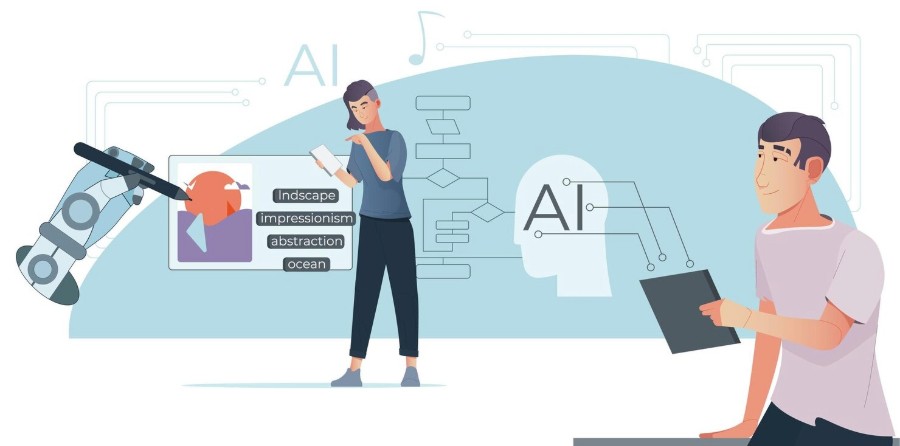Unveiling the Magic Behind the Machine: Demystifying Explainable AI
Artificial intelligence (AI) has woven itself into the fabric of our lives, shaping everything from entertainment recommendations to medical diagnoses. However, as AI algorithms make increasingly complex decisions, a critical question arises: can we truly understand how these decisions are made? This is where Explainable AI (XAI) steps in, acting as a bridge between the opaque world of AI and the need for human comprehension.
Explainable AI refers to the ability of AI systems to provide understandable explanations of their decisions and actions. It aims to bridge the gap between the complexity of AI algorithms and the need for transparency in their decision-making processes. The significance of XAI lies in its potential to enhance trust, accountability, and usability of AI systems across diverse domains, including healthcare, finance, criminal justice, and more.
Imagine being denied a loan by an AI-powered system, left clueless about the reason behind the rejection. This lack of transparency breeds frustration and distrust, not just for individuals but for society as a whole. XAI strives to dismantle this barrier by providing meaningful explanations for AI decisions and empowering users to grasp the rationale behind them.
Why is Explainable AI Crucial?
- Building Trust and Fairness: Without understanding the thought process of AI models, it’s difficult to trust their fairness and avoid potential biases. XAI helps ensure algorithmic fairness and mitigate discriminatory outcomes, fostering trust in AI systems.
- Ensuring Accountability: As AI plays a more prominent role in critical domains like healthcare and finance, understanding its decision-making process becomes paramount for holding systems accountable. XAI sheds light on these processes, promoting responsible AI development.
- Debugging and Improvement: By peering into the inner workings of AI models, developers can identify errors, biases, and areas for improvement, leading to more robust and reliable systems. XAI acts as a diagnostic tool, enabling continuous improvement of AI models.
Navigating the Landscape of Explainable AI
- Feature Importance: This method highlights the features that most significantly influenced the model’s prediction. While it provides a basic understanding, it might not capture complex interactions between features, offering a limited view.
- Local Explanations: These explanations delve into a specific prediction for a single instance, providing insights into how the model arrived at that particular outcome. However, they might not generalize well to other instances, offering a localized perspective.
- Counterfactual Explanations: This approach explores what changes to the input data would have led to a different prediction, offering valuable insights into the model’s decision boundaries. However, it can be computationally expensive for complex models, presenting a scalability challenge.
- Model-Agnostic Explanations: These techniques work across different models, explaining their predictions without relying on their internal workings. However, they might not provide as deep an understanding as model-specific methods, offering a more generalized but potentially less precise explanation.
The Road Ahead for Explainable AI
While significant progress has been made, challenges remain. Developing effective explanations for complex models operating in high-dimensional spaces requires ongoing research and collaboration. Additionally, ensuring that explanations are not just technically accurate but also understandable to non-technical users is crucial for fostering trust and acceptance.
As AI continues to evolve, XAI will play a vital role in ensuring its responsible and beneficial development. By fostering transparency and understanding, XAI can pave the way for a future where AI empowers individuals and societies, guided by human values and ethical principles.
Application Areas of XAI
XAI plays a crucial role in various domains, fostering trust, transparency, and responsible development of AI systems. Here are some key application areas:
- Finance:
- Loan approvals: XAI can explain why loan applications are approved or denied, mitigating bias and ensuring fairness.
- Fraud detection: By explaining how fraud detection models identify suspicious activities, XAI can improve their accuracy and reduce false positives.
- Algorithmic trading: XAI can shed light on trading decisions made by AI systems, promoting market transparency and investor confidence.
- Healthcare:
- Medical diagnosis: XAI can help doctors understand how AI models diagnose diseases, improving interpretability and trust in AI-assisted diagnosis.
- Treatment recommendations: XAI can explain why specific treatment options are recommended, empowering patients to make informed decisions.
- Drug discovery: XAI can provide insights into complex biological processes, aiding in the development of new drugs and treatments.
- Justice and Law:
- Automated decision-making: XAI can explain how AI algorithms are used in sentencing and parole decisions, ensuring fairness and due process.
- Risk assessment: XAI can explain how AI models assess the risk of recidivism in criminal cases, promoting transparency and accountability.
- Evidence analysis: XAI can help lawyers understand how AI systems analyze evidence, aiding in legal defense strategies.
- Autonomous Vehicles:
- Driving decisions: XAI can explain why self-driving cars make specific maneuvers, building trust and understanding of autonomous driving technology.
- Accident investigations: XAI can provide insights into the factors that contributed to accidents involving self-driving cars, enabling safer development and deployment.
- Ethical considerations: XAI can help ensure that autonomous vehicles make decisions aligned with ethical principles and societal values.
- Other Applications:
- Marketing and advertising: XAI can explain why specific products or ads are recommended to users, promoting transparency and user control.
- Human-computer interaction: XAI can explain how AI-powered chatbots or virtual assistants make decisions, leading to more natural and user-friendly interactions.
- Environmental monitoring: XAI can explain how AI models predict environmental changes or identify pollution sources, aiding in better decision-making for sustainability.
Explainable AI is not just a technical pursuit; it’s a philosophical and societal imperative. By unveiling the magic behind the machine, we can harness the full potential of AI while safeguarding human values and building trust in this powerful technology. As we move forward, let’s embrace the principles of XAI and work towards a future where AI is not just intelligent but also understandable, accountable, and fair.
Source

